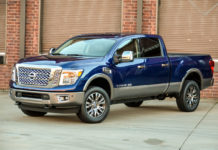As plant-closing announcements piled up last winter, Detroit's automakers talked hopefully that warmer weather might bring signs of a turnaround.
Instead, with gasoline prices hovering around three dollars per gallon according to the US Department of Energy, US carmakers are feeling the pressure of stagflation.
Demand for new vehicles softened during the spring, and new vehicle sales are expected to drop 15 percent from July 2005, with US carmakers absorbing the biggest part of the decline, according to Edmunds.com.
Even Chrysler Group, the lone bright spot in the American auto industry over the past 18 months, has warned it will probably lose 600 million dollars in the third quarter as it launches new vehicles and struggles to reduce inventories.
Chrysler's operating profits also plunged 91 percent in the second quarter, according to DaimlerChrysler AG's quarterly financial report.
Tom LaSorda, Chrysler Group's chief executive, blamed the sharp drop on the declining sales of the group's minivans, pickup trucks and sport utility vehicles.
Chrysler dealers have complained that inventories have gotten out of line with demand. Consequently, the Chrysler Group is prepared to cut production by as much as 75,000 units in the third quarter, LaSorda said.
Ford Motor Co. also is cutting production, after posting a 123-million-dollar loss in the second quarter.
Ford is also struggling to find a way to end the company's heavy dependence on pickup trucks and sport utility vehicles, according to Ford chairman and chief executive Bill Ford.
The company's new crossover vehicles, the Ford Edge and Lincoln MKX, must turn into hits quickly or the company will face another round of cuts, analysts predicted.
The second-quarter loss was in sharp contrast with a profit of 946 million dollars, or 47 cents per share, in the second quarter of last year.
“The key question is how Ford's solution has changed in response to a more difficult environment,” Morgan Stanley analyst Jonathan Steinmetz said in a research note to investors.
Citigroup's Jon Rogers wrote that “restructuring risk remains, as Ford management must stem market-share losses and free cash use headed into a difficult second half 2006 for North American automotive operations and FMCC (Ford Motor Credit Co.).”
At the same time, Ford is feeling aftershocks from a decline in its credit rating over the past 18 months, as well as a 40 percent drop in income from Ford Motor Credit in the second quarter.
Ford also continues to lose market share to Asian manufacturers, as it has for the past decade.
General Motors Corp.'s fortunes, meanwhile, improved in the second quarter despite a huge loss attributed to balance sheet adjustments that opened the door for thousands of GM employees to retire early.
GM ended the second quarter with a net loss of 3.2 billion dollars, or 5.62 dollars per share, compared with a reported loss of 987 million dollars, or 1.75 dollars per share, for the same period a year ago.
Fritz Henderson, GM's chief financial officer, declined to predict when the automaker's critical North American operations would return to profitability.
But he noted that more than 10,000 GM employees have left the payroll and that balance will leave in the third and fourth quarters.
GM North America posted an adjusted net loss of 85 million dollars, excluding special items, in the second quarter of 2006, a 1.1-billion-dollar improvement over the prior year.
Still, Henderson said GM's management is acutely aware that it can't rely on cost cutting to ensure its success.
“We know we have to develop and build great cars and trucks to grow our business, and we're encouraged by the recent success of our newest vehicles, particularly in the US market,” added GM chairman Richard Wagoner.








